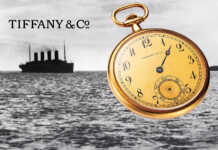
The looming spectre of a proposed 25% tariff on all imports from Canada by President-elect Donald Trump has many industries bracing for impact. While the spotlight often falls on sectors like automotive and energy, the jewellery industry—specifically Canadian wholesalers—must also prepare to navigate this challenge. However, within this potential storm lies a silver lining– the opportunity to strengthen domestic markets, innovate, and diversify.
Opportunities in Domestic Markets
The proposed tariff could inadvertently stimulate demand for Canadian-made jewellery. Consumers, facing higher costs on imported goods, may increasingly turn to locally crafted alternatives. For wholesalers, this represents a golden opportunity to promote domestic products, highlighting their unique qualities and competitive pricing.
By forming stronger partnerships with local jewellery designers and manufacturers, wholesalers can create collections that resonate with Canadian consumers. These collaborations can also lead to the showcasing of distinctly Canadian designs, inspired by the country’s natural beauty and cultural heritage. This strategy appeals not only to domestic buyers but also to international customers seeking one-of-a-kind pieces with meaningful stories.
Strengthening Supply Chains
While the U.S. is a significant market for Canadian jewellery, the tariff threat underscores the importance of diversifying export destinations. Canadian wholesalers could explore opportunities in markets such as Europe, Asia, and the Middle East, where demand for high-quality, ethically sourced jewellery is growing. Trade agreements like the Comprehensive Economic and Trade Agreement (CETA) with the European Union can provide an advantageous platform for expansion.
Tariffs on imports often compel industries to reevaluate supply chains, and jewellery is no exception. Wholesalers should seize this opportunity to rebuild and strengthen local supply networks. Sourcing metals and gemstones within Canada not only reduces dependence on international suppliers but also aligns with consumer preferences for sustainable and ethical products.
The use of Canadian-sourced materials, such as gold from responsibly managed mines or lab-grown diamonds, appeals to eco-conscious consumers. Ethical sourcing can be a powerful marketing tool, reinforcing the value of Canadian jewellery in the global marketplace.
Adding Meaning to Purchases
A powerful way to connect with consumers is by telling the story behind each piece of jewellery. Whether it’s the inspiration drawn from the rugged Canadian landscape, Indigenous art forms, or the craftsmanship of local artisans, these narratives enhance the emotional value of a purchase.
Digital platforms such as social media and blogs are effective storytelling tools. Behind-the-scenes videos, interviews with designers, and insights into the journey of a piece from concept to creation can captivate audiences and strengthen brand loyalty. Platforms like Instagram Reels and YouTube allow businesses to visually showcase their craftsmanship and connect with a broader audience.
Strategic Marketing and Branding
To thrive in a tariff-influenced market, branding and marketing efforts need to align with consumer values and global trends. Wholesalers should emphasize:
- Sustainability: Highlight the use of eco-friendly practices and ethical sourcing.
- Authenticity: Showcase the distinctiveness of Canadian designs and their cultural significance.
- Quality: Reinforce the superior craftsmanship and durability of locally made jewellery.
Additionally, participating in international trade shows and leveraging e-commerce platforms can help Canadian wholesalers reach a wider audience while building strong brand identities.
Turning Challenges into Opportunities
Finally, Canadian jewellers and industry associations must come together to advocate for policies that support the sector. Collective efforts can include lobbying for reduced tariffs, negotiating favourable trade agreements, and promoting Canadian jewellery on the global stage.
While a 25% tariff on imports to the U.S. could disrupt traditional business models, it also provides a chance for Canadian jewellery wholesalers to innovate, diversify, and thrive. By focusing on local markets, strengthening supply chains, and leveraging the power of storytelling, the industry can turn potential challenges into a showcase of resilience and creativity.
For Canadian jewellery businesses, the path forward may be laden with hurdles, but it’s also paved with opportunities for those ready to adapt and evolve. As the saying goes, “pressure makes diamonds”—and this pressure may just create a dazzling future for the Canadian jewellery industry.
















